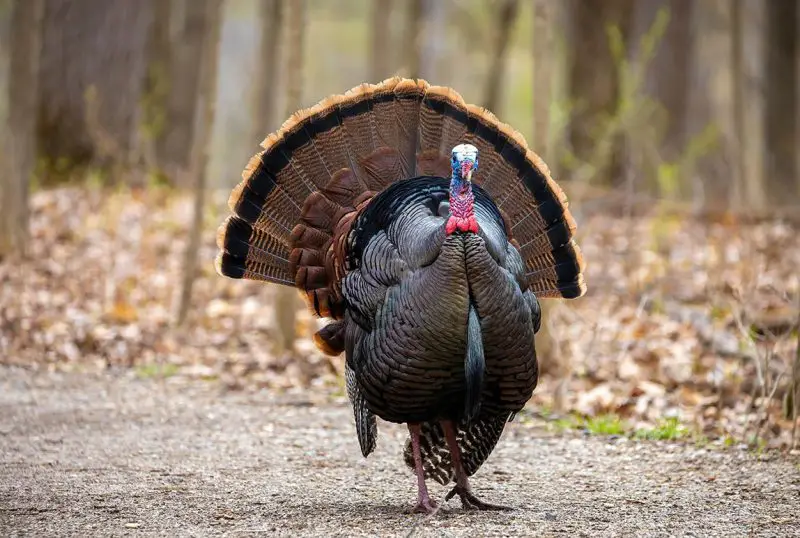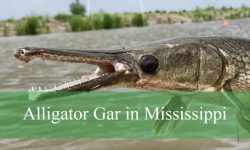When most people think of Michigan’s wildlife, they imagine white-tailed deer, black bears, or trout-filled rivers. Yet hidden in plain sight is one of the state’s most fascinating comeback stories—the wild turkey. Once nearly wiped out from Michigan’s forests, these bold, intelligent, and surprisingly social birds have made an incredible return across the state’s woodlands, fields, and suburbs.
From the Upper Peninsula to southern farmlands, wild turkeys have adapted to Michigan’s changing landscape with extraordinary resilience. They’re far more than the clumsy birds you see in holiday cartoons. In fact, wild turkeys are fast, strong, cunning, and essential players in the state’s ecosystems.
In this article, we’ll reveal what you didn’t know about wild turkeys in Michigan—their secret behaviors, historical journey, habitats, and the surprising ways they’ve become part of the state’s wildlife success story.
The Wild Turkey’s Remarkable Comeback

From Extinction to Abundance
By the early 1900s, wild turkeys were extirpated from Michigan—hunted out of existence and left with no habitat to survive. Forest clearing for agriculture and unregulated hunting decimated populations that once thrived throughout the Great Lakes region.
Restoration began in the 1950s, when the Michigan Department of Natural Resources (DNR) launched a reintroduction program using turkeys from Pennsylvania and other states. These birds were released into suitable forested habitats across Michigan’s Lower Peninsula.
The effort worked. Today, Michigan is home to over 200,000 wild turkeys, thriving in nearly every county except the far northern tip of the Upper Peninsula. Their story is one of conservation triumph and adaptation.
Understanding Michigan’s Wild Turkeys
Physical Characteristics
The Eastern wild turkey (Meleagris gallopavo silvestris) is Michigan’s native subspecies. Males, known as toms or gobblers, can weigh up to 25 pounds and stand nearly four feet tall. Females, or hens, are smaller, averaging 8–12 pounds.
Their feathers are a glossy mix of bronze, copper, and green iridescence, shimmering in sunlight. Males have a prominent beard—a cluster of coarse feathers hanging from the chest—and spurs on their legs used for dominance fights.
Their eyesight is extraordinary—three times better than a human’s—and their field of vision spans nearly 270 degrees, making them masters of detecting predators or hunters.
Behavior and Intelligence
Turkeys are far more intelligent than many assume. They communicate using a wide range of sounds—over 30 distinct calls, including gobbles, clucks, yelps, and purrs—to coordinate group movement, warn of danger, and attract mates.
They also have excellent memory and spatial awareness, remembering safe roosting sites and reliable food sources across seasons.
Habitat and Distribution
Where They Live in Michigan
Wild turkeys prefer a mix of forests and open fields, giving them cover and food sources. They are particularly common in:
- Southern Michigan, where agriculture and woodlots provide ideal conditions.
- The northern Lower Peninsula, with dense forests and oak stands.
- Western Upper Peninsula, where populations are spreading steadily.
They roost in tall trees at night—often pines, oaks, or maples—and descend at dawn to forage.
Seasonal Movements
Unlike migratory birds, wild turkeys stay in Michigan year-round. In winter, they gather in flocks—sometimes hundreds strong—to conserve energy and search for food. In spring, males separate to establish territories, while females nest in concealed spots near brush or logs.
Diet and Feeding Habits
Omnivorous Foragers
Wild turkeys are omnivores, eating whatever the season offers. Their diet includes:
- Seeds and acorns in fall and winter
- Berries, insects, and grasses in spring and summer
- Corn and soybeans from farm fields during harvest seasons
Turkeys scratch the ground with their strong legs to uncover food, leaving distinctive circular patches in the soil.
The Role in the Ecosystem
By dispersing seeds and controlling insect populations, wild turkeys help maintain ecological balance. They also serve as prey for predators like coyotes, bobcats, and eagles—making them integral links in Michigan’s food web.
Breeding and Reproduction
The Spring Spectacle
Each spring, Michigan’s forests come alive with the deep gobbling calls of males announcing their dominance. Gobblers fan out their shimmering tails, puff out their chests, and strut in elaborate displays to impress hens.
This ritual, known as strutting, is one of the most captivating sights in the wild. Rival males may clash violently, using their spurs to establish hierarchy.
Nesting and Raising Chicks
Hens lay 10–14 eggs in shallow ground nests lined with leaves. After a 28-day incubation, tiny chicks called poults hatch, already capable of following their mother within hours.
By summer, poults learn to forage for insects and plants. Their survival rate depends heavily on weather and predator density. Warm, dry springs usually mean successful broods; cold, wet ones can wipe out entire nests.
Myths and Misconceptions
Myth |
Truth |
|---|---|
Turkeys can’t fly. |
False. Wild turkeys can fly up to 55 mph for short bursts. |
Turkeys are dumb. |
False. They have sharp instincts and complex communication. |
Turkeys live only in the woods. |
False. They thrive in farms, suburbs, and city edges. |
Turkeys are aggressive toward people. |
Rarely true. Most avoid humans unless provoked during breeding season. |
All turkeys gobble. |
Only males gobble; females communicate with softer yelps and clucks. |
The Role of Hunting and Conservation
A Model of Success
Hunting, often criticized in wildlife debates, has actually played a key role in restoring turkeys. Fees from hunting licenses and permits fund habitat protection, research, and wildlife programs through the Pittman-Robertson Act.
Each year, Michigan’s spring and fall turkey seasons attract thousands of hunters who help manage populations sustainably. Bag limits, season dates, and mandatory reporting ensure long-term balance.
Conservation Partnerships
The National Wild Turkey Federation (NWTF) has worked with Michigan DNR for decades to improve habitat quality, replant native trees, and control invasive species. Their efforts have restored over 350,000 acres of turkey habitat across the state.
This partnership between conservationists and hunters stands as one of America’s greatest wildlife recovery stories.
Predators and Challenges
Natural Enemies
While adult turkeys can fend off many threats, they still face dangers from:
- Coyotes and bobcats, which ambush from ground level.
- Great horned owls and eagles, which strike from above.
- Raccoons and skunks, which raid nests for eggs.
Human Threats
The biggest modern threats are habitat loss and severe winters. Suburban expansion reduces nesting areas, while deep snow makes foraging difficult. In harsh winters, flocks may move closer to farms and roads, increasing mortality from vehicles and predators.
Strange and Fascinating Facts About Michigan’s Wild Turkeys
- Turkeys can see in color and detect UV light, making camouflage crucial for hunters.
- They sleep in trees, safe from ground predators.
- Wild turkeys have regional “dialects.” Their calls vary by region and even by flock.
- Their heartbeats slow dramatically in cold weather, conserving energy.
- Turkeys have excellent memories, recalling roosting sites and food sources for years.
- Their droppings reveal their sex. Males leave J-shaped droppings; females’ are spiral.
- They can recognize over 100 individual flock members.
- Ben Franklin once proposed the wild turkey as America’s national bird, calling it “a true original native.”
The Importance of Turkeys in Michigan’s Ecology
Ecosystem Engineers
Turkeys are like natural gardeners. As they scratch the soil for food, they spread seeds and aerate the forest floor, helping native plants grow. Their droppings add nutrients, enriching the soil.
Food Chain Stability
Because turkeys occupy both predator and prey roles, their presence stabilizes populations of smaller animals and scavengers. Predators depend on them during lean months, while plants rely on their seed dispersal.
Indicators of Environmental Health
Healthy turkey populations often reflect strong forest ecosystems. Their presence signals balanced predator-prey relationships and sustainable habitat management.
The Human Connection
Turkeys in Native Culture
For Indigenous peoples of the Great Lakes region, the wild turkey symbolized gratitude, fertility, and renewal. Feathers were used in ceremonies, and turkey meat provided a valuable food source.
Modern Encounters
In recent years, wild turkeys have become increasingly visible in suburban Michigan. They wander through neighborhoods, perch on fences, and occasionally cause traffic slowdowns. While some find them amusing, others view them as nuisances—proof of their adaptability to modern landscapes.
Wildlife experts remind residents to enjoy them from a distance, avoid feeding, and respect nesting areas during spring.
Conservation Outlook
Continued Growth
Thanks to ongoing habitat management and education, Michigan’s turkey population remains stable. Wildlife biologists are now focusing on maintaining genetic diversity and monitoring disease threats like avian pox.
The Role of Citizens
Residents can help by:
- Preserving forest edges and native vegetation.
- Reporting turkey sightings to DNR wildlife databases.
- Supporting conservation organizations like NWTF.
The future of wild turkeys in Michigan depends on continued cooperation between landowners, hunters, and conservationists.
FAQs About Wild Turkeys in Michigan
Are wild turkeys native to Michigan?
Yes. They were native but disappeared in the early 1900s before being successfully reintroduced.
Can wild turkeys survive Michigan winters?
Absolutely. Their thick feathers and flocking behavior help them withstand cold and snow.
What do wild turkeys eat in winter?
They eat acorns, leftover crops, seeds, and even mosses when food is scarce.
Are wild turkeys aggressive?
Only during mating season, and usually toward their reflections or rivals, not people.
Is hunting necessary?
Yes. Controlled hunting maintains healthy populations and funds habitat conservation.
Conclusion
The wild turkeys of Michigan are a testament to nature’s resilience and humanity’s ability to right past wrongs. From near extinction to thriving populations, their journey reflects one of America’s greatest wildlife success stories.
These birds are not just symbols of Thanksgiving—they’re reminders of balance, cooperation, and the delicate connection between humans and nature.
So next time you hear a gobble echo through a Michigan forest or see a strutting tom beneath autumn leaves, remember: you’re witnessing a living legacy of survival, rebirth, and wild beauty that once almost disappeared forever.






